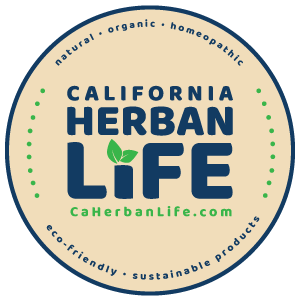Cinnamon is a staple in every American kitchen, from its omnipresence in apple pie and pumpkin-spice-everything to its usefulness for seasoning Indian curries or Moroccan tagines. But cinnamon may also be a useful staple in your functional food, medicine cabinet: research points to the possibility that cinnamon can be a useful treatment for everything from type 2 diabetes to the common cold (find out more with our guide to the research on cinnamon, distilled).
As with anything that you put into your body, however, it’s important to shop smart: there are several types of cinnamon on the market today, some of which can be exposed to pesticides or may not have all of the active components highlighted in medical research. Always choose whole, organic Ceylon cinnamon whenever possible, and keep it in a cool, dry place until ready to use.
The Latest Research on Cinnamon Benefits
While the concept of food as medicine is as old as time, it’s taken us quite a while to get up to speed in the west. Folkloric allusions to cinnamon’s role as a digestive aid, pain reliever, or cure for the common cold are all undergoing research as we speak, and promising evidence has already been found linking cinnamon to reduced symptoms of type-2 diabetes, reduced inflammation, and more.
It’s also important to note that many medical studies examine cinnamon in extremely high doses that would be impossible (and could even be dangerous) to ingest at home. Be sure to check with your doctor before adding any supplements to your health regimen and speak with him or her about the appropriate dosage for you.
Also note that some studies examine the health benefits of Cassia cinnamon, while others examine the benefits of Ceylon cinnamon. As a rule, it’s generally better to opt for the latter: known in some circles as “true” cinnamon, it does not have the high blood-thinning coumarin content of Cassia cinnamon which could be dangerous to your liver in high doses.
For more information on the latest research on cinnamon, check out our guide to cinnamon’s health benefits.
Finding Quality Cinnamon
Not all cinnamon is created equal, so be careful what you buy. When you are perusing the supermarket shelves, you’ll likely see Cinnamomum cassia sold as Chinese or Cassia cinnamon, whereas Cinnamomum verum will be sold as Ceylon cinnamon. According to our experts, you should opt for the latter.
“Cinnamomum cassia, or Chinese cinnamon, has a very similar flavor and color, but it does not have the same health benefits,” she explains. “Only Cinnamomum verum provides the health benefits, and this is an expensive spice that is often illicitly substituted with Cinnamomum cassia.”
If you do have Cassia cinnamon on your shelf already, you can certainly continue using it as a cooking spice, but Farley warns that the Cassia variety should not be consumed in therapeutic doses, due to its high concentration of coumarin, which can cause liver toxicity in high doses.
“Not more than 2 tsp. per day,” she suggests.
In addition to choosing the right variety of cinnamon, you’ll want to find a brand that you can feel good about. Certified organic cinnamon is a great place to start, but you’ll also want to check the origin of your spice. In 2013, the FDA found that 12 percent of spice imports into the U.S. were contaminated with insect parts, while seven percent were contaminated with toxic salmonella bacteria – both instances are twice the rate of other imported foods. A 2017 risk assessment of spices published by the FDA found that between 1985 and 2012, cinnamon had been contaminated with salmonella, bacillus, and staphylococcus bacteria, among others.
“Cinnamomum cassia, or Chinese cinnamon, has a very similar flavor and color, but it does not have the same health benefits,” she explains. “Only Cinnamomum verum provides the health benefits, and this is an expensive spice that is often illicitly substituted with Cinnamomum cassia.”
If you do have Cassia cinnamon on your shelf already, you can certainly continue using it as a cooking spice, but Farley warns that the Cassia variety should not be consumed in therapeutic doses, due to its high concentration of coumarin, which can cause liver toxicity in high doses.
“Not more than 2 tsp. per day,” she suggests.
In addition to choosing the right variety of cinnamon, you’ll want to find a brand that you can feel good about. Certified organic cinnamon is a great place to start, but you’ll also want to check the origin of your spice. In 2013, the FDA found that 12 percent of spice imports into the U.S. were contaminated with insect parts, while seven percent were contaminated with toxic salmonella bacteria – both instances are twice the rate of other imported foods. A 2017 risk assessment of spices published by the FDA found that between 1985 and 2012, cinnamon had been contaminated with salmonella, bacillus, and staphylococcus bacteria, among others.
Fact: Not all cinnamon is the same. By learning to use a specific type and making the most of its unique subtleties, you’ll get better-tasting results that elevate your favorite recipes.
Simply Organic partners with carefully selected growers from across the world to provide you with the exact flavor and aroma you need for stunning results — no matter what you’re making:
Simply Organic Cinnamon
Cinnamomum aromaticum sourced from Vietnam
Intense, hot-candy flavor. Warm, radiant aroma. In other words: the perfect choice for recipes where spice really matters, like these Cinnamon Roll Pancakes.
Vietnamese cinnamon can be tricky to come by — but we carefully source this coveted variety from organic growers who keep the good stuff coming.
Simply Organic Ceylon Cinnamon
Cinnamomum verum sourced from farming co-ops in Sri Lanka
What “true” cinnamon is all about. Ceylon Cinnamon’s delicate fruity-floral flavor makes a sweet addition to Overnight Oats or these Vanilla Snickerdoodle Cookies stuffed with homemade ice cream.
Pure, organic Ceylon Cinnamon is a true rarity — Simply Organic is proud to bring this ethically-sourced delicacy to local co-ops and neighborhood stores near you.
Simply Organic Cinnamon Sticks
Cinnamomum burmannii sourced from Indonesia
So much more than a garnish, cinnamon sticks infuse teas, cocktails, coffee and more with game-changing flavor and aromatics. Try them in this summer-ready Raspberry Ginger White Sangria or this Mexican Hot Chocolate that hits the spot any time of the year.
Explore more delicious ways to use cinnamon at home.
How Much Cinnamon Should I Eat?
Once you’ve got your hands on some true Ceylon cinnamon, the recommended dosage, according to the U.S. Department of Health, is up to 6 grams daily for 6 weeks or fewer.
“I would suggest a week rest after the 6 weeks, before beginning again,” says Farley. “Turmeric can be taken during the rest week since it has similar benefits.”
You can also reduce your cinnamon consumption to 5 days a week without a rest week, says Parehk, though she – and we – urge anyone starting a new supplement regimen to consult with a qualified practitioner first and to be very careful of over-consumption of cinnamon, no matter which variety you have. Overconsumption of cinnamon or even a rapid increase of consumption of cinnamon can have some adverse effects.
One, explains Dizon, is that cinnamon’s anti-bacterial properties do not distinguish between good or bad bacteria in the gut, meaning that you could find yourself facing some cinnamon-related digestive issues. “Incorporate fermented foods to replenish your stomach with good bacteria,” she suggests.
Our experts also warn against incorporating too much cinnamon into your diet if you are pregnant, breastfeeding, or have a heavy menstrual cycle. If any of these things apply to you, please see a medical professional before adding cinnamon to your diet.
How Should I Add Cinnamon to My Diet?
Jane Dizon, a nurse and health and fitness enthusiast behind Health and Fitness, has a few suggestions for how to add cinnamon to your diet. “You could add half to one teaspoon of cinnamon powder to your coffee, or sprinkle some on your fruit platter. It’s also great with baked sweet potatoes, oatmeals and apple cider.”
And cinnamon doesn’t always have to be used alone. “You can combine ginger and cardamom with cinnamon if you have a sluggish digestive system,” explains Baron.
You don’t even have to eat your cinnamon to take advantage of it. Dizon suggests cinnamon-scented candles to boost brain function, and Baron makes a homemade toothpaste with cinnamon, nutmeg, baking soda and cinnamon oil. She also suggests a cinnamon and oatmeal face mask for acne.
Article context by organicauthority.com




